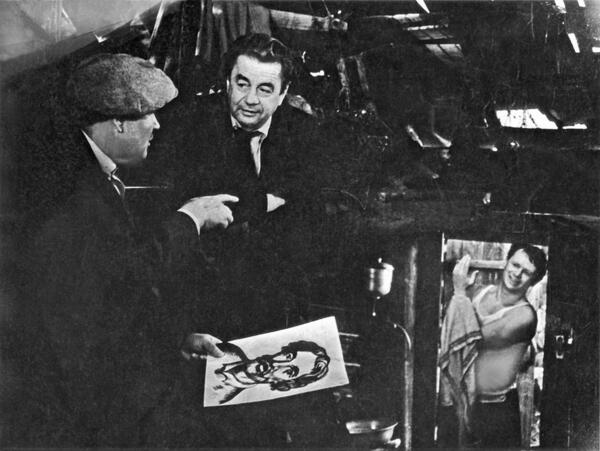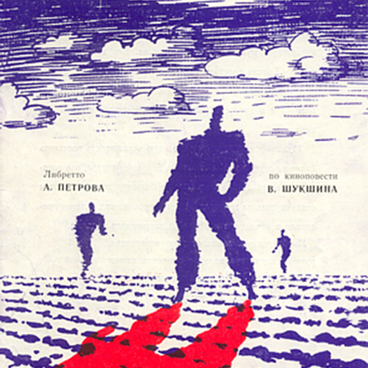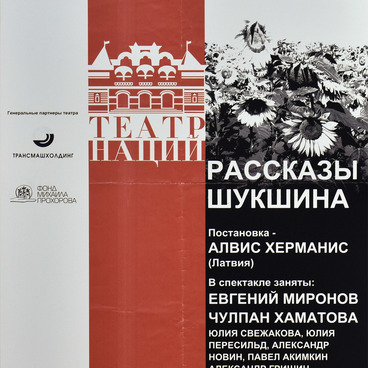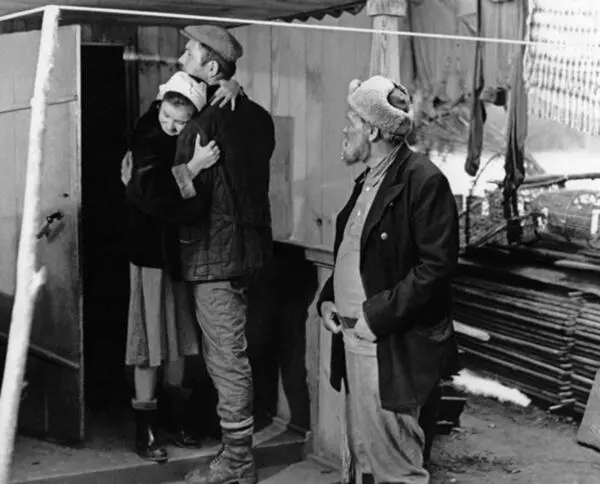Vasily Shukshin produced Strange People at Gorky Film Studio in 1969. He acted as both director and screenwriter for the film. Valery Ginzburg assumed the role of the cameraman, Karen Shakhnazarov became the score composer, and Igor Bakhmetyev was appointed as the art director.
Shooting took place in the outskirts of Suzdal and in the town of Vladimir. The film starred Vsevolod Sanayev (kolkhoz chairman Matvey Ryazantsev), Panteleimon Krymov (history teacher), and Yuri Skop (Kolka). Shukshin chose the collection of novels genre — he used three stories that were not connected by common plot. Even the credits read: ‘Three stories’.
Initially, Shukshin picked two texts — The Weirdo and Begging Your Pardon, Madam. He intended to use the story Fading, Going To Waste for the third part, but Ginzburg persuaded Shukshin to take the Thoughts instead. The cameraman believed that Shukshin’s consent was driven by his intention to tell the story of Stepan Razin on a big screen. This theme has been translated into “Stenka Razin”, a supporting character and self-taught sculptor from the kolkhoz chaired by Matvey Ryazantsev from the Thoughts. Shukshin added several short scenes depicting the two together in order to show and prove to the wide audience that Razin’s image was still alive among the people, yet their knowledge of real Razin was quite vague.
Strange People was censured quite extensively. Some scenes have been shortened, narration has been introduced, and some of Bronka Pupkov’s lines have been cut. Shukshin completed production in February 1969. However, the film was released only in 1970 — editing took almost a year.
Besides, the audience didn’t appreciate Strange People. Shukshin admitted his mistake and criticised himself. He wrote the following in the article In Front of a Multimillion Audience: ‘The film Strange People did not bring me satisfaction. I would seriously, not rashly, call it a failure, if others had not already done it… The film was watched poorly, people even left. One can’t work like that. This waste… I acutely felt that the spectator experience is a great thing — more than ever before. I neglected it, and thus could not establish a conversation with my viewer’.
Shooting took place in the outskirts of Suzdal and in the town of Vladimir. The film starred Vsevolod Sanayev (kolkhoz chairman Matvey Ryazantsev), Panteleimon Krymov (history teacher), and Yuri Skop (Kolka). Shukshin chose the collection of novels genre — he used three stories that were not connected by common plot. Even the credits read: ‘Three stories’.
Initially, Shukshin picked two texts — The Weirdo and Begging Your Pardon, Madam. He intended to use the story Fading, Going To Waste for the third part, but Ginzburg persuaded Shukshin to take the Thoughts instead. The cameraman believed that Shukshin’s consent was driven by his intention to tell the story of Stepan Razin on a big screen. This theme has been translated into “Stenka Razin”, a supporting character and self-taught sculptor from the kolkhoz chaired by Matvey Ryazantsev from the Thoughts. Shukshin added several short scenes depicting the two together in order to show and prove to the wide audience that Razin’s image was still alive among the people, yet their knowledge of real Razin was quite vague.
Strange People was censured quite extensively. Some scenes have been shortened, narration has been introduced, and some of Bronka Pupkov’s lines have been cut. Shukshin completed production in February 1969. However, the film was released only in 1970 — editing took almost a year.
Besides, the audience didn’t appreciate Strange People. Shukshin admitted his mistake and criticised himself. He wrote the following in the article In Front of a Multimillion Audience: ‘The film Strange People did not bring me satisfaction. I would seriously, not rashly, call it a failure, if others had not already done it… The film was watched poorly, people even left. One can’t work like that. This waste… I acutely felt that the spectator experience is a great thing — more than ever before. I neglected it, and thus could not establish a conversation with my viewer’.




